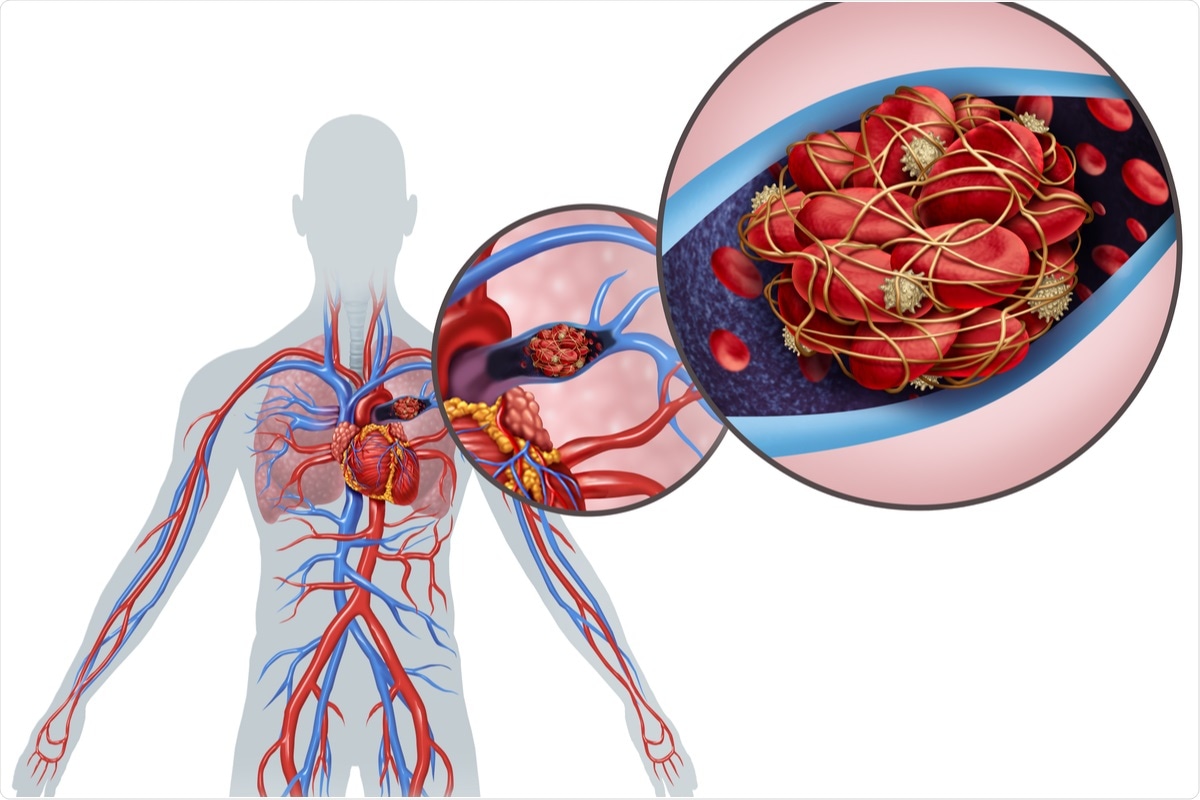The ongoing coronavirus disease 2019 (COVID-19) pandemic, which has been caused by the rapid spread of the severe acute respiratory syndrome coronavirus 2 (SARS-CoV-2), has significantly affected the global healthcare system and economy. Previous studies have reported that SARS-CoV-2-infected patients are at a higher risk of developing venous thromboembolic disease (VTE), which includes pulmonary embolism (PE).

Study: Diagnostic accuracy of age-adjusted D-dimer for pulmonary embolism among Emergency Department patients with suspected SARS-COV-2: A Canadian COVID-19 Emergency Department Rapid Response Network study. Image Credit: Lightspring / Shutterstock.com
Background
Researchers have revealed that about 5% of patients that presented to the Canadian emergency department (ED) had PE. Very few studies are currently available that assess the risk of PE among ED patients with suspected SARS-CoV-2 infection.
In fact, the majority of available data have focused on hospitalized SARS-CoV-2 infected with PE. However, this does not represent the entire ED population, as many could suffer from a mild infection that does not require hospitalization.
The diagnosis of PE in ED patients with suspected COVID-19 is difficult as a result of several factors. For example, since PE and COVID-19 share common symptoms, many times SARS-CoV-2 infections are not immediately determined in patients during the index ED visit.
Researchers have emphasized that the D-dimer interpretation in suspected SARS-CoV-2-infected individuals is not well understood. However, relying on this biomarker may assist in the overutilization of advanced diagnostic imaging, such as computed tomography for pulmonary embolism (CTPA) or ventilation-perfusion scanning (VQ) in ED investigations among patients with suspected concurrent SARS-CoV-2 infection.
Although the American College of Emergency Physicians (ACEP) has used an age-adjusted D-dimer test threshold as a safe and cost-effective approach for excluding PE in low to intermediate-risk patients, the ACEP has not established age-adjusted D-dimer thresholds in ED patients with suspected SARS-CoV-2 infection.
To this end, in a recent study published on the medRxiv* preprint server, researchers evaluate the diagnostic accuracy of an age-adjusted D-dimer strategy by comparing it with absolute D-dimer thresholds used for predicting 30-day PE diagnosis in ED patients with confirmed or suspected SARS-CoV-2 infections.
About the study
Data from fifty sites of the multicenter Canadian SARS-CoV-2 Emergency Department Rapid Response Network (CCEDRRN) between March 1, 2020, and July 2, 2021, was used for the current study. The researchers recruited adults who were tested for SARS-CoV-2 infection at index ED visits. Taken together, the study cohort included patients with any one of the conditions among chest pain, shortness of breath, hypoxia, syncope/presyncope, or hemoptysis.
Among the 52,038 patients who were included in the cohort, age-adjusted D-dimer levels had a sensitivity of 96% with a specificity of 48% that was comparable to the most sensitive absolute threshold of 500 ng/mL. However, other absolute D-dimer thresholds did not exhibit suitable clinical reliability.
Conclusions
Taken together, the authors analyzed ED patients with suspected or confirmed SARS-CoV-2, using an age-adjusted D-dimer test threshold, which revealed similar sensitivity and negative likelihood ratio with superior specificity to a standard 500 ng/mL absolute D-dimer test threshold. Thus, the researchers revealed a decreased D-dimer sensitivity and specificity in SARS-CoV-2 positive patients as compared to SARS-CoV-2 negative patients.
One of the strengths of this study is the inclusion of a broad spectrum and a large number of symptomatic ED patients, which included about 60% of ED patients who were discharged from the hospital.
The current study also revealed D-dimer performance in patients with less severe illnesses. Thus, the researchers demonstrated that an age-adjusted D-dimer approach could significantly decrease unnecessary CTPA testing without elevating the number of missed PE cases.
Study limitations
Some variables of interest, such as Wells and YEARS criteria, both of which are vital for clinical VTE risk stratification, were absent in CCEDRRN. A second limitation was that the study cohort may not have captured all PE events, as it was predominantly focused on the outcome definition of 30-day PE, which was based on CTPA and ED or hospital diagnostic codes.
Furthermore, the current study relied on D-dimer testing across fifty ED sites that used different machine manufacturer models and assays. As all the D-dimer values were harmonized to ng/mL FEU, it reflects an aggregate performance across many test models. Time-varying factors were also not captured in CCEDRRN.
*Important notice
medRxiv publishes preliminary scientific reports that are not peer-reviewed and, therefore, should not be regarded as conclusive, guide clinical practice/health-related behavior, or treated as established information.
- Lin, K., Xu, K., Daoust, R., et al. (2022) Diagnostic accuracy of age-adjusted D-dimer for pulmonary embolism among Emergency Department patients with suspected SARS-COV-2: A Canadian COVID-19 Emergency Department Rapid Response Network study. medRxiv. doi:10.1101/2022.03.07.22272036. https://www.medrxiv.org/content/10.1101/2022.03.07.22272036v1.
Posted in: Medical Research News | Medical Condition News | Disease/Infection News | Healthcare News
Tags: Biomarker, Chest Pain, Computed Tomography, Coronavirus, Coronavirus Disease COVID-19, D-dimer, Diagnostic, Embolism, Emergency Medicine, Healthcare, Hemoptysis, Hospital, Hypoxia, Imaging, Pain, Pandemic, Pulmonary Embolism, Respiratory, SARS, SARS-CoV-2, Severe Acute Respiratory, Severe Acute Respiratory Syndrome, Syndrome, Tomography

Written by
Dr. Priyom Bose
Priyom holds a Ph.D. in Plant Biology and Biotechnology from the University of Madras, India. She is an active researcher and an experienced science writer. Priyom has also co-authored several original research articles that have been published in reputed peer-reviewed journals. She is also an avid reader and an amateur photographer.
Source: Read Full Article
